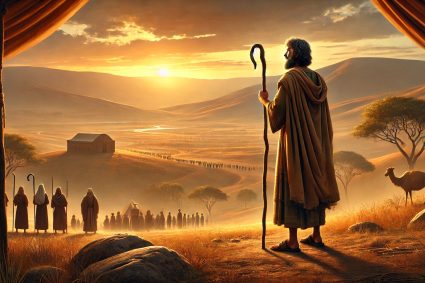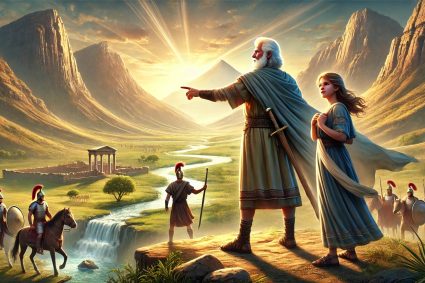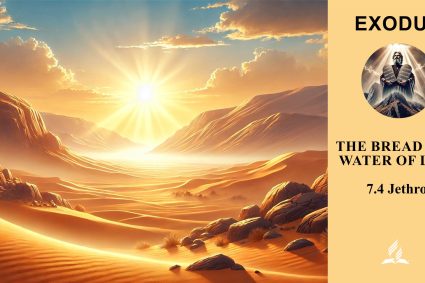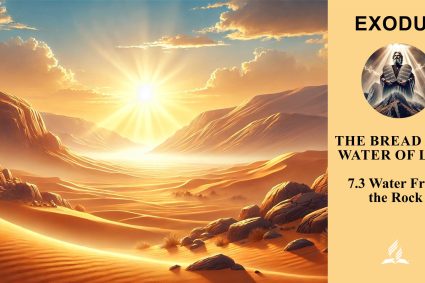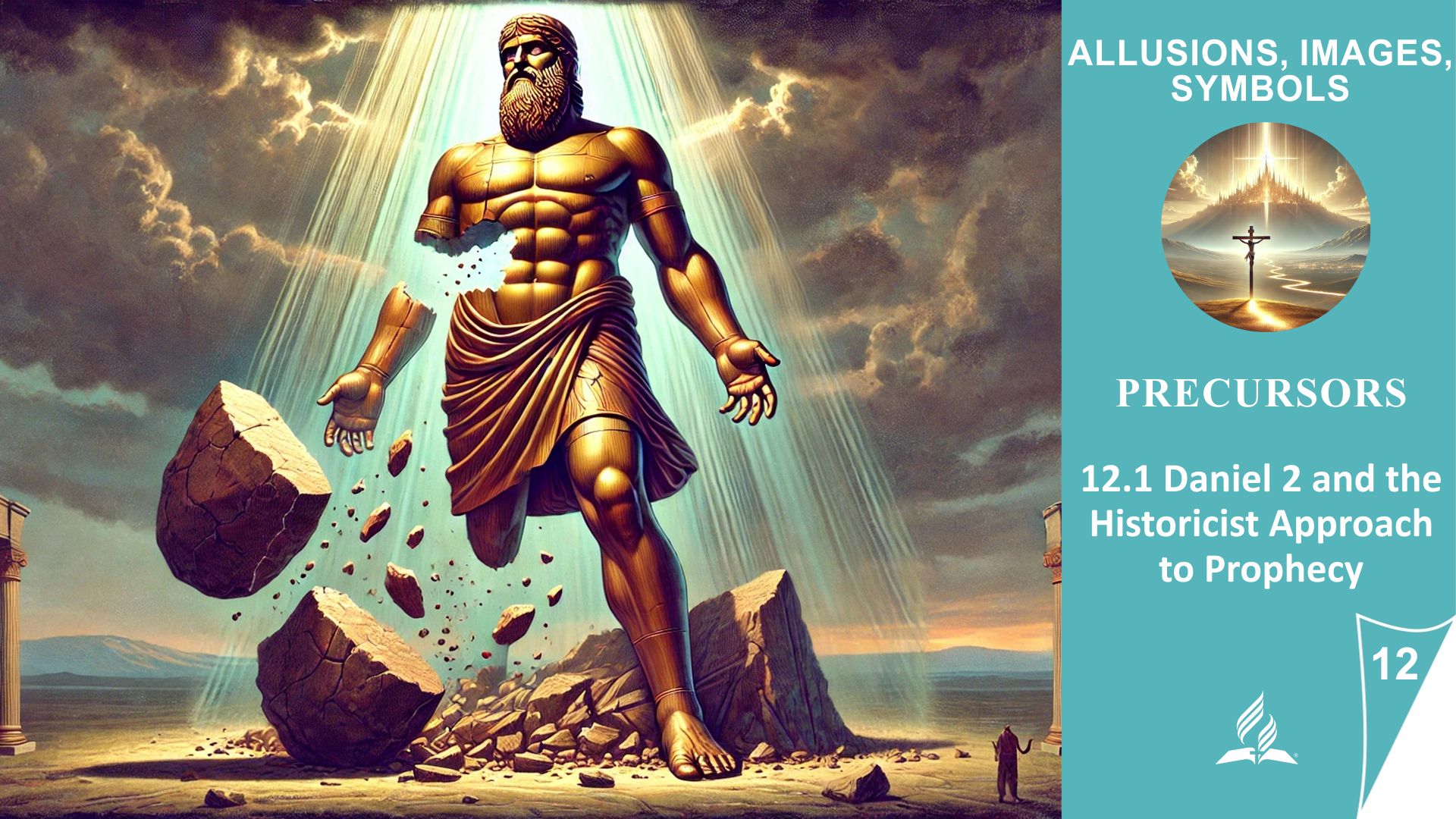


🟦 Introduction
History repeats itself—not in detail, but in principles. What we learn from the past often determines how we will stand in the future. In the Bible, we encounter people who remained steadfast in the midst of political upheaval, religious crises, and personal trials—not because they were perfect, but because they obeyed God rather than men.
Lesson 12 takes us to the roots of prophetic insight and spiritual faithfulness. Beginning with Daniel 2, a panorama of world history unfolds that reaches all the way to our present day. But it doesn’t stop at historical facts—this prophecy becomes the stage on which the great conflict between God’s kingdom and human rebellion is revealed.
The golden statue on the plain of Dura, the blazing furnace, the early persecutions of Christians, the looming mark of the beast—these are not merely stories from the past but foreshadowings of future trials. This lesson shows that the question of true worship is not a side issue but the very center of spiritual identity.
It’s not about fear, but about alignment. Not about religious pressure, but about conscious decision. The faithfulness of the three friends in the furnace, Daniel’s quiet trust, Esther’s courageous witness, and the obedience of the early Christians all give us a prophetic example for our time: in the midst of external threats and inner struggles, God remains—firm, faithful, present.
This lesson invites us to look at the forerunners—so that we ourselves may be prepared. For the same principles that upheld them will uphold us in the final days: faith that obeys. Loyalty that endures. Hope that does not fade. And a God who still stands with His people—even in the fire.

⛪ Lesson 12: Precursors
📘 12.1 Daniel 2 and the Historicist Approach to Prophecy
✨ A Prophetic Statue – God’s Plan Through History
…………………………………………………………………
🟦 Introduction
How can one still believe in a clear direction of history in an age of wars, climate disasters, crumbling alliances, and global uncertainty?
Daniel 2 is like a ray of light piercing through the fog of human history. This ancient vision—given to a pagan king in a dream—shows us with astonishing accuracy the course of world history from Babylonian gold to the fragile feet of iron and clay. What Daniel describes in simple but powerful imagery leaves no doubt: God is not merely a spectator of time—He is its author.
This lesson is intended to help us rediscover the prophetic dimension of the Bible—not as a mysterious kind of future-telling magic, but as an invitation to trust. Because those who know where history is heading will live differently in the present.
………………………………………………………………….
📖 Bible Study – Daniel 2 and the Historicist Approach
The Vision of the Statue (Daniel 2:31–45)
King Nebuchadnezzar sees a colossal statue: head of gold, chest and arms of silver, belly and thighs of bronze, legs of iron, feet of iron and clay. A stone—cut out without human hands—strikes the statue at its feet, completely destroys it, and becomes an eternal mountain.
-
The Head of Gold – Babylon
Daniel identifies the first kingdom: “You, O king, are the head of gold” (v. 38). Babylon (605–539 BC) was the golden empire—magnificent, wealthy, advanced. But it would not last forever. -
Chest and Arms of Silver – Medo-Persia
A divided kingdom (two arms) that replaced Babylon (539–331 BC). Less splendid, but stable and organized. Known for its rule of law (see Dan. 6:9). -
Belly and Thighs of Bronze – Greece
Alexander the Great conquered the world with breathtaking speed (331–168 BC). But the empire fragmented after his death. Bronze is sturdy, but not precious. -
Legs of Iron – Rome
Rome, the iron empire (168 BC to 476 AD), ruled with force, discipline, and structure. Iron stands for ruthless power (v. 40). Rome ruled during the time of Jesus. -
Feet of Iron and Clay – Divided Europe
After Rome’s fall, no new world empire emerged. European nations (v. 43) are partly strong (iron), partly weak (clay). Despite intermarriage, alliances, and treaties, they remain divided. -
The Stone – God’s Kingdom
A stone, cut without human hands, strikes the statue. It shatters it and fills the whole earth. This symbolizes the coming Kingdom of God: indestructible, eternal, and not made by human hands (vv. 44–45).
………………………………………………………………….
📖 Answers to the Questions
📌 Question 1: What did Nebuchadnezzar dream, and how did Daniel interpret it?
Nebuchadnezzar dreamed of a massive statue made of various materials, which was struck and destroyed by a stone. Daniel explained that the metals symbolized successive world empires. Each material represented a particular era in world history. The stone, cut without human hands, represents God’s coming eternal kingdom, which will replace all human empires.
The dream was a prophetic preview of how history would unfold over the centuries—from Daniel’s time to the return of Christ.
📌 Question 2: What does Daniel 2 prove about God’s knowledge and work in the future?
Daniel 2 shows that God not only knows the future but actively directs it. He sets up and deposes kingdoms (Dan. 2:21), even using pagan kings for His purposes (like Nebuchadnezzar!), and announces His kingdom as the only lasting hope.
That each empire rose exactly as foretold—Babylon, Medo-Persia, Greece, Rome, and the fractured Europe—is powerful evidence: God does not make mistakes. He is Lord of history.
………………………………………………………………….
✨ Spiritual Principles
-
God is sovereign over history, politics, and power.
-
Human empires rise and fall—God’s kingdom endures.
-
Prophecy is not speculation, but revelation.
-
Trusting in God’s plan brings inner peace—even in uncertain times.
………………………………………………………………….
🧩 Application for Daily Life
-
Direction: When the news is disturbing, remember: God is not surprised. Daniel 2 shows that everything happens under God’s permission—and it all ends in His kingdom.
-
Strengthening Faith: Bible prophecy brings certainty. It’s a firm anchor for faith during the storm.
-
Encouragement to Witness: This prophetic clarity is an invitation to share Jesus with others. The Bible does not err—let the world know!
………………………………………………………………….
✅ Conclusion
Daniel 2 is not just an old story—it is God’s timeline for humanity. What was predicted centuries ago has come true down to the detail. We are living in the time of the feet—at the very end of the prophetic statue. The stone is coming. Christ is coming.
This truth doesn’t call us to fear, but to faith. It invites us to already be citizens of a kingdom that no human force can shake.
………………………………………………………………….
💭 Thought of the Day
Whoever believes that God guides history need not fear the future.
………………………………………………………………….
✍️ Illustration – The Stone on Brussels Square – A Prophetic Encounter
Brussels, Belgium – Summer 2022.
Jonas, 27, a political science student, was on a study tour at the European Parliament. Between sessions, discussions about Brexit, climate policy, and security issues, he asked himself: What truly holds this world together? He loved Europe—the idea of unity in diversity. Yet he felt it: the cracks were showing.
That evening, he sat in the Grand Place. Around him: tourists, selfies, lights. But his heart was heavy. In front of him sat an old man on a bench, reading an old book. Jonas noticed: it was a Luther Bible, open to Daniel 2.
“Excuse me,” Jonas asked curiously, “what are you reading?”
The man looked up, his eyes warm and alert. “I’m reading about a king who dreamed. And about a God who doesn’t dream—but plans.”
Jonas chuckled, “And what does that have to do with today?”
The old man answered calmly:
“Everything. What’s in Daniel 2 is happening now. Babylon—past. Rome—gone. Europe—divided. And yet we think we’ve got it all under control. But the stone is coming.”
Jonas frowned. “The stone?”
“A kingdom that no human founds. No election, no treaty, no military. God’s kingdom. It will sweep everything else away. And only it will remain.”
The man closed his Bible. “What if tonight, you had a place in it?”
Jonas was silent. The square around him blurred. For the first time in his life, he understood: history has a destination. And I’m invited.
He watched the old man slowly disappear. The next day, he bought a Bible. And began seeking the God who not only knows history—but also his.




